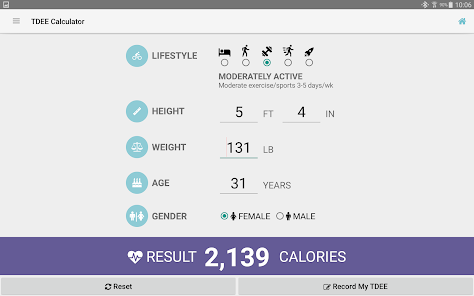When it comes to managing your health and fitness, understanding your Total Daily Energy Expenditure (TDEE) is key. A TDEE calculator such as one from Legion Athletics can help you determine how many calories you burn in a day, which is crucial for anyone looking to lose, maintain, or gain weight. This article will explore what TDEE is, how it’s calculated, and why it’s important for your fitness journey.
Knowing your TDEE is like having a roadmap for your calorie intake. Without this number, any diet or exercise plan is just a shot in the dark. With the right TDEE information, you can tailor your nutrition and fitness routines to suit your body’s needs better.
What is TDEE?
TDEE stands for Total Daily Energy Expenditure. It’s the total number of calories you burn daily through all activities: sleeping, working, exercising, and even digesting food. Knowing your TDEE is essential because it helps you understand how many calories you need to consume to meet your fitness goals.
Your TDEE is not a static number; it changes with your lifestyle. If you become more active, your TDEE increases. If you’re less active or lose muscle mass, your TDEE decreases. This dynamic number is central to your health and fitness journey.
How TDEE Works
TDEE considers your age, gender, weight, height, and level of physical activity to estimate how many calories you burn per day. It uses formulas based on the Harris-Benedict equation, which has been a reliable method for estimating metabolic rate since the early 20th century.
The beauty of a TDEE is its simplicity. By inputting a few pieces of information, you can get an estimate that would otherwise require complex calculations or expensive equipment to determine. This makes it an accessible tool for anyone interested in understanding their calorie needs.
Importance of Accurate TDEE Calculation
An accurate TDEE calculation is important because it influences your diet and exercise plan. If your goal is weight loss, you’ll want to consume fewer calories than your TDEE. For weight gain, you’ll need to consume more. An accurate TDEE ensures you’re not eating too little or too much.
An inaccurate TDEE can lead to frustration. You might find yourself working hard and not seeing results or feeling tired and run down because you’re not eating enough. This is why it’s crucial to use a well-designed TDEE calculator and to update your information regularly.
TDEE and Weight Management
Your TDEE is the starting point for any weight management plan. By knowing how many calories your body needs, you can create a diet plan that aligns with your weight goals. It’s a balance – eat more than your TDEE for weight gain or less for weight loss.
Understanding your TDEE also helps you make informed decisions about your diet. It’s not just about the quantity of calories but the quality of those calories. A good diet plan considers both your calorie needs and the nutritional value of the foods you eat.
Factors Affecting TDEE
Several factors can affect your TDEE, including muscle mass, age, and hormone levels. For example, more muscle mass increases TDEE, while aging tends to decrease it. This is why TDEE often asks for detailed information to give a more accurate estimate.
Other factors include your daily activity level and the thermic effect of food, which is the energy used for digestion. Even small changes, like taking the stairs instead of the elevator, can affect your TDEE. It’s important to consider these variables when calculating your daily energy needs.
Understanding your TDEE is a fundamental aspect of managing your diet and fitness. TDEE is a useful tool that provides the information necessary to tailor your nutrition and exercise according to your goals. Remember, whether you’re trying to lose weight, gain muscle, or maintain your current physique, knowing your TDEE is the first step to success.
